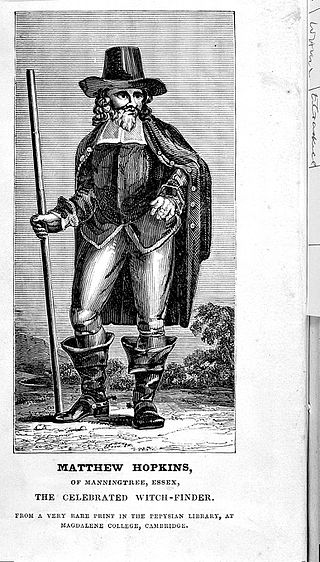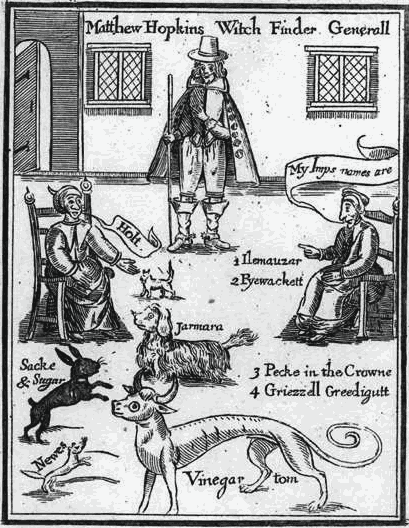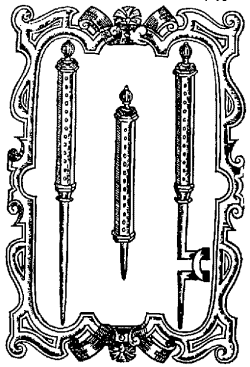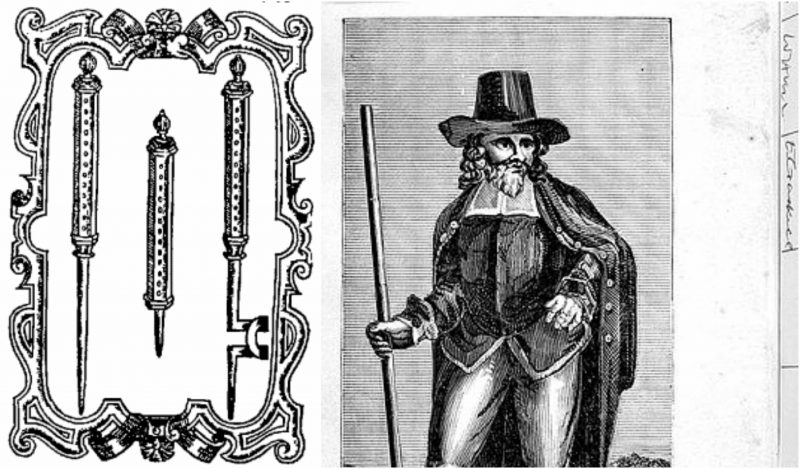In 1603, when the kingdoms of England and Scotland were united, King James IV of Scotland became James I of England.
He was famous for his fascinations with anything associated with the occult. Soon after he assumed the throne, James I released his best-selling book “Daemonologie” in which he explored demonic magic and witchcraft. James was so obsessed with the “black arts” that in 1604, he managed to persuade Parliament to pass the Witchcraft Statute according to which witchcraft was punishable by death.

James heightened the public anxiety around black magic and witches and as the fear rose in the decades to follow, there were more and more accusations between people. There were some who profited from the panic, seeking business in finding witches and bringing them to be judged in front of the law.
One such man was Matthew Hopkins who nobody had heard of before. He was an impoverished lawyer coming from a strong puritanical background who had moved to Manningtree in Essex, in 1644.
It is not certain how Hopkins became involved with hunting witches, but records show that he was working on destroying anything that could be related to the “works of the devil”. He believed that there were women practicing witchcraft regularly and that there were many of them close to his home.
He claimed that he had overheard women discussing their meetings with the Devil and that this provoked him to begin his career as a witch-hunter. He hunted down 23 women who were then accused of witchcraft, four of which died in prison, while the rest were convicted and hanged.
In 1645, Hopkins assumed the title of Witch-Finder, purporting to be commissioned by Parliament to uncover and prosecute witches. Accompanying him were a group of all-female assistants, traveling from one place to another, trying to “examine” women for witchcraft. They were charging a reasonable price of some “twenty shillings a town”. It is speculated that Hopkins’ activities and motivations were entrepreneurial, having found such a lucrative occupation to meet the superstitions and ideas of the times; the witch-finder became obsessed with tracking down witches and it is not hard to think why.

The methods Hopkins used to investigate the cases of reported witchcraft were mostly borrowed from James’ “Daemonologie”. The worst of all was that the investigation included keeping the suspect awake for days, which resulted with confessions to almost anything due to sleep deprivation. The job of Hopkins and his group of witch-hunters involved employing witch-prickers, ‘pricking’ the accused, cutting their arms with a knife, needle or a pin, and if they didn’t bleed, they were convicted of being a witch.
One favorite confessional method of Hopkins’ was the “swimming test.” During this test, the accused woman was bound with her arms and legs to a chair and thrown into the village pond. If she would sink and drown, the woman was innocent. If the women floated, they were tried as witches.

In the period between 1644 and 1646, Hopkins and his witch-hunter group were responsible for the deaths of some 300 women. It was at a time when the average wage of a farmer was just six pence a day that Hopkins was earning approximately 1000 pounds for his work. He even wrote a small pamphlet in 1647, in which he advertised himself, describing his services as “The Discovery of Witches”
Anything before 1644 and after 1647 is uncertain about Hopkins’ life. It is said that later he was even convicted of witchcraft himself and was drowned as a result of the “swimming test”. During the turbulent days of the English Civil War between 1642 and 1651, many events that occurred around this time appear strange and unexplained; Hopkins’ work is one such example of this. The last witch to be executed was Alicia Molland in Exeter, Devon in 1684.
